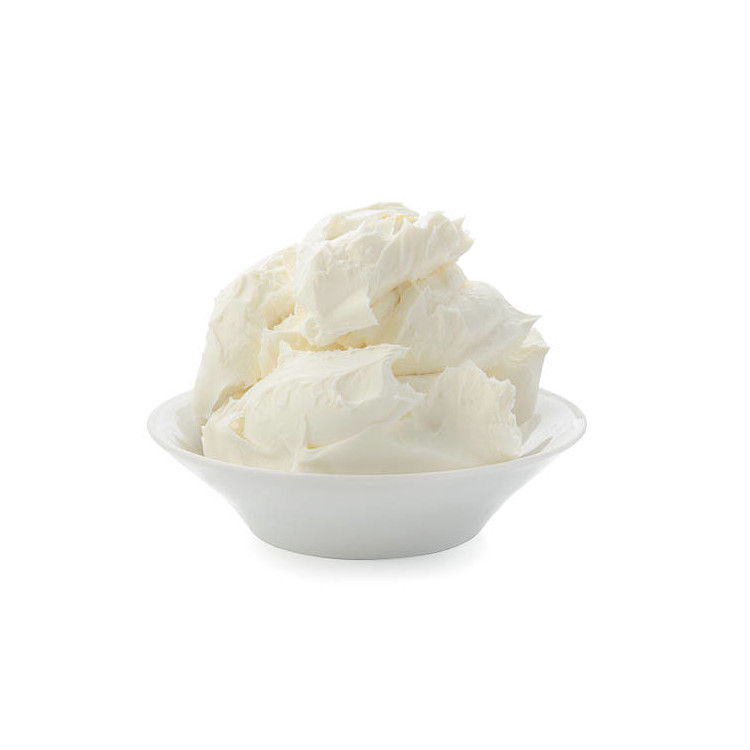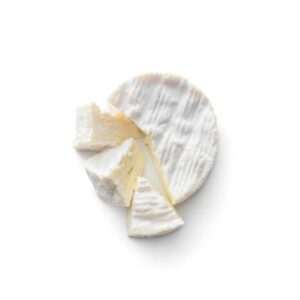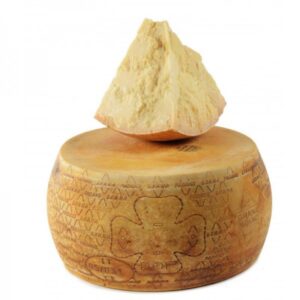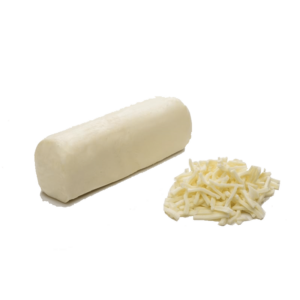Description
Mascarpone is a creamy cheese typical of the Lombardy region, and in particular of the Lodi area, with rather ancient and uncertain origins. The theses on its origins are varied: it is certain that the first mention of this cheese was found in the book “Summa Lacticiniorum”, which indicated a recipe with mascarpone, sugar and rose water. According to some, its name derives from the Lombard dialect “mascherpa”, which means milk cream or ricotta, while others attribute it to the exclamation “¡Mas que bueno! pronounced by a Spanish governor who was fascinated by it.
The origin of its preparation is to be found instead in the need on the part of cattle breeders to use the milk produced by cows near the birth, when this is more fat and concentrated; this happened in the past mainly during the winter period, while now with the advent of new technologies, Mascarpone can be produced throughout the year. Mascarpone is a very fat and proteinic cheese, and it is therefore recommended not to abuse its consumption. Its fat percentage is around 44%, while cholesterol is 95 mg per 100 grams of product.
Mascarpone is a soft and creamy cheese, which is prepared with cream added to citric acid which serves as a coagulant. Its paste does not undergo maturation, it is white or light straw yellow and its flavor is delicate and mellow; at times it recalls both the taste of butter and the acidity of fresh cream, while its aroma definitely recalls the smell of milk.
To produce Mascarpone, the milk is centrifuged in order to separate the cream, which is used to make this cheese. The cream is heated up to a temperature of 90-95°C, citric acid is added which makes it coagulate, separating the Mascarpone from the whey. At this point the cheese is homogenized and packaged hot; it is immediately placed in cold rooms, where its temperature is lowered and it becomes compact, while remaining creamy at the same time.
Since it does not need to age, Mascarpone is immediately ready for consumption, which must therefore be immediate: in fact, in the refrigerator, this cheese is kept tightly closed in its original packaging for about 3 weeks, while once opened it must be consumed in the day tour; it is also necessary to be very careful that mold does not form on the surface and that the aqueous part does not separate from the solid one.
In southern Italy, especially in the province of Salerno, for some years it has become a tradition to prepare Mascarpone with buffalo milk. This type of cheese is even more caloric and fat than the one prepared with cow’s milk, it has a more intense and wild flavor and a marked acidity due to the characteristic buffalo milk.
Mascarpone is the main ingredient of an Italian dessert in particular, Tiramisù. In addition to being used to prepare this delicious dessert, Mascarpone can also be enjoyed alone as a spreadable cheese, or together with Gorgonzola, in order to mitigate its strong and intense flavour, or even as a filling for traditional Christmas desserts such as dates with walnuts and Panettone.






Reviews
There are no reviews yet.